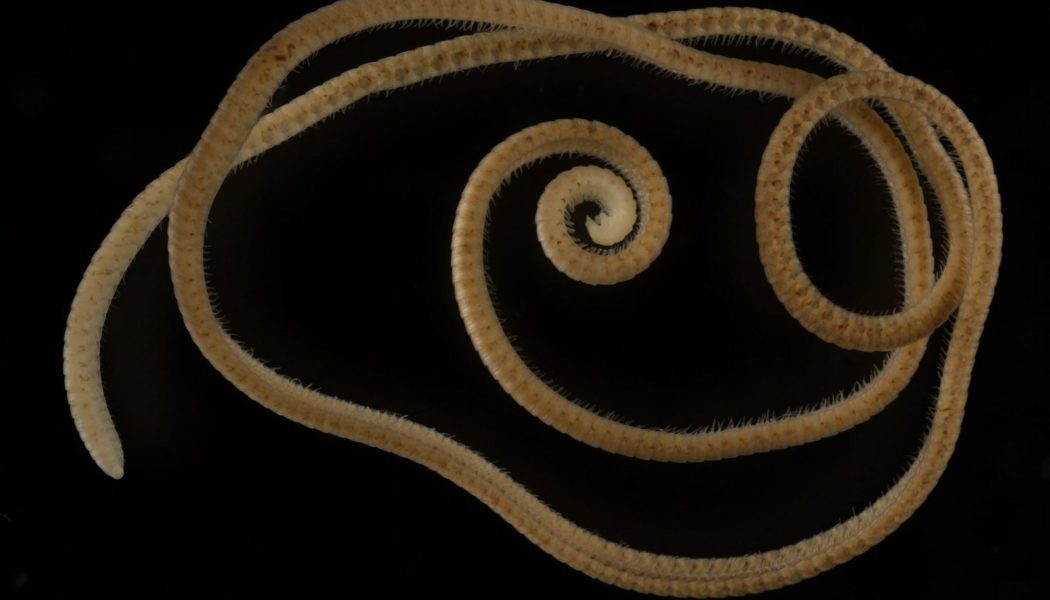
Scientists in Australia have discovered a new species of millipede that lives 200 feet underground, has no eyes, and scurries around on 1,306 legs.
They named it Eumillipes persephone after Persephone, the Greek goddess and queen of the underworld. But this new invertebrate deserves a crown for another reason: It has the most legs of any creature on Earth, living or dead.
In fact, the competition isn’t even close. The largest specimen of the new species, a female, was less than four inches long, yet easily beat out the previous world-record holder, Illacme plenipes, a millipede that lives near Silicon Valley, California, and has 750 legs.
This means that E. persephone is the world’s first true millipede, since the word millipede means “thousand feet” in Latin, according to a new study published December 16 in the journal Scientific Reports.
While the new animal’s leg count is unprecedented, it may not even be the limit of what’s possible. (Read about the discovery of a glowing millipede.)
Many millipede species begin life with just eight legs, but as they shed their skin and add new body segments, or rings, they can keep developing more legs, says study leader Paul Marek, a millipede expert at Virginia Polytechnic Institute and State University.
“So there’s probably an individual out there with more rings and more legs, and that’s kind of hard for me to wrap my mind around,” says Marek.
Delving deep
In 2020, Marek’s colleagues, led by Bruno Buzatto of Australia’s Macquarie University, travelled to the Goldfields region of Western Australia to search for millipedes and other subterranean critters.
This area is known for its rich gold and nickel deposits, which mining companies identify by boring deep exploratory holes into the earth. Each hole is less than six inches wide: just big enough to lower a trap that catches the tiny creatures that manage to exist in such places. (Read about giant ancient millipede fossils found in Canada.)
These traps—a length of PVC pipe stuffed with wet vegetation and attached to a nylon cord—can be left underground for months. During that time, underground dwellers, such as millipedes, are attracted to the tasty rotting plants and get stuck inside.
That’s how the team found E. persephone. Back in his Virginia laboratory, Marek uncoiled the specimen, then took high-resolution microscopic images of its body. On these images, he digitally marked the animal’s body sections in increments of 10, a strategy to ensure he didn’t double-count the legs. The final tally revealed 1,306 individual limbs.
So why all the legs? The team suspects they allow E. persephone to walk on eight different planes simultaneously.
Join Our Telegram Group : Salvation & Prosperity









